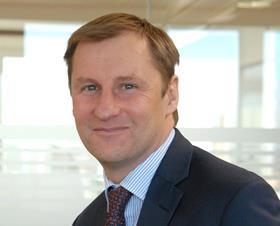Chief executive explains that 2021’s £21.3m profit dip has been funnelled into digital transformation work
Motor and home insurer Esure has reported a 3.2% decrease in its in-force policies to 2.5 million in the six months to 30 June 2022, compared to December 2021, according to the company’s 2022 half-year financial results, published on 25 August 2022.
Esure attributed the drop in active policyholders to the insurer having to increase rates and maintain a disciplined approach to both underwriting and pricing.

Why the insurer has decided to increase its rates is due to a variety of reasons.
This includes navigating the FCA’s general insurance pricing regulations, which were effective from January 2022, as well as an increase in claims frequency - and, therefore, claims costs - as more motorists returned to the roads this year post-pandemic. Inflation has been a further driver of raised rates.
At the end of the current financial year, Esure expects to remain within its target operating range for solvency coverage of between 140% and 160%.
In terms of customer feedback, Esure has achieved a relationship net promotor score (NPS) of 31 for 2022’s H1 - the same score as it achieved at 2021’s year-end.
The insurer expects to maintain this result for the rest of 2022.
Esure chief executive David McMillan told Insurance Times: “We expect the market to remain challenging, but our balance sheet provides the group with resilience while enabling us to continue investing in our strategic transformation.”
Digital acceleration
Meanwhile, Esure’s laser-like focus on digital transformation last year saw it sacrifice £21.3m in profit in the 12 months to 31 December 2021, according to McMillan.
Esure has focused on digital transformation throughout 2021 and in the first six months of 2022 - this work forms the second pillar of the insurer’s ‘Game Changer’ strategy, which Esure first implemented internally in 2020. It promoted the strategy externally from March 2021.
Despite the profit hit caused by the insurer laying the foundations for digital acceleration, McMillan told Insurance Times that he is ”really pleased with the transformation efforts over the last six months”, especially considering that the insurer was in a “very different position” back in 2019.
He said: “This is a multiyear programme to build a leading digital business with great customer service and superior unit costs.
“In the first half [of 2022], we have delivered a number of important milestones. We have established a cloud native technology platform, launched a new motor proposition on three price comparison websites (PCWs), deployed a new digital claims platform and substantially increased our use of artificial intelligence and machine learning capabilities across the company.
“There have been challenges along the way, but we are really pleased with the transformation so far.
“On a personal note, it has been great to see the team rise to the challenge and I am really grateful for their tireless commitment.

“We are focused on driving Esure further to the forefront of digital customer experience, data science and innovation.”
The PCWs that currently offer Esure Flex are Compare the Market, GoCompare and Confused.com. Esure expects the product to be available on Moneysupermarket.com shortly.
The chief executive also confirmed that Esure’s digital transformation focus, which the insurer calls its blueprint programme, will continue throughout H2 2022. The blueprint programme first started in late 2020.
Esure started its Game Changer strategy by addressing the ’Brilliant Basics’ - the first pillar of the strategy, which initially got underway in 2019. This element aims to deliver ”world-class insurance fundamentals across pricing, underwriting, claims and customer service”, according to the insurer.
Esure noted that this work was completed in September 2021.
McMillan continued: “Over the next six months, we will scale the volume of customers supported on the new platform, develop our customer proposition - including home - expand machine learning capability and start to migrate existing customers.”
Reducing emissions
Esure has also laid out a number of targets as part of its climate strategy, which it launched in H1 2022.
This includes achieving net zero across scope one and scope two carbon dioxide emissions by 2025.
Scope one emissions are direct greenhouse gas emissions produced from sources that are controlled or owned by an organisation, while scope two emissions refer to indirect greenhouse gas emissions associated with the purchase of electricity, steam, heat, or cooling.
The insurer hopes that this work will contribute to a 50% reduction in scope three emissions by 2030 - this relates to carbon emissions caused by activities from assets not owned or controlled by the insurer, but where the organisation has an indirect impact via its value chain.
Esure aims to achieve net zero across all three scopes by 2050.
These targets build on Esure offsetting its 2021 scope one and two emissions ahead of target within Q1 2022.
Meanwhile, the insurer’s ’Greener Parts’ initiative, launched with Synetiq in February 2022, saw the business use 2,380 recycled motor repair parts in the first half of 2022 – equating to an approximate saving of 50,000kg carbon dioxide equivalent.
More than three-quarters (76%) of Esure’s branded bodyshops achieved a net zero neutral status as of June 2022 - the insurer plans for 100% of its bodyshop network to have this status by the end of the year.
Hosted by comedian and actor Tom Allen, 34 Gold, 23 Silver and 22 Bronze awards were handed out across an amazing 34 categories recognising brilliance and innovation right across the breadth of UK general insurance.



















































No comments yet